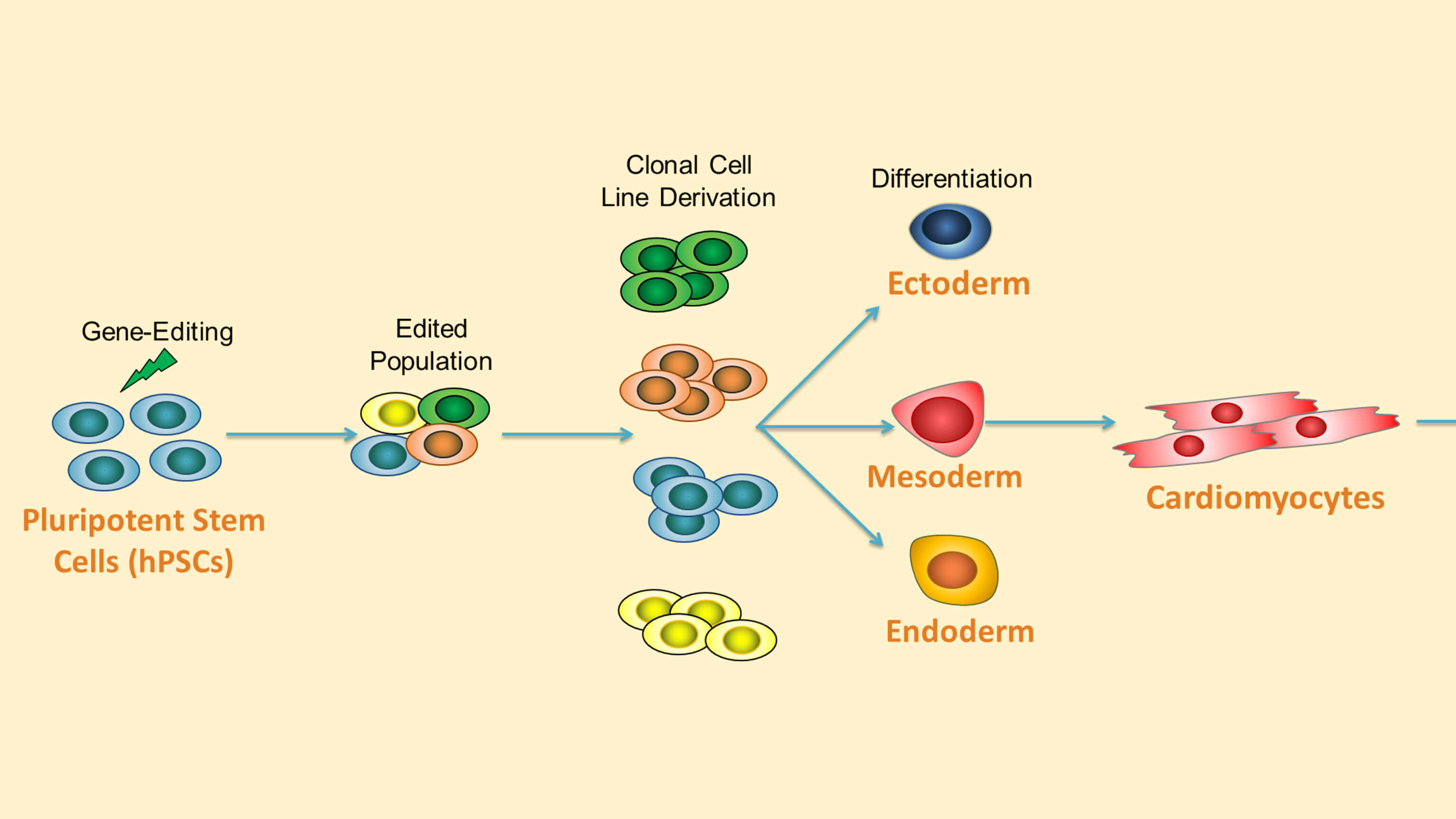Directed Differentiation and Disease Modeling
Human pluripotent stem cell (hPSC)-based models hold tremendous potential for studying human development and disease. Directed differentiation and disease modeling are two key methods for using hPSCs in drug discovery, cell therapy validation, and disease research.
- Directed differentiation of hPSCs refers to the in vitro differentiation of these cells toward a specific cell type through defined cell culture conditions. Directed differentiation is achieved by the addition of specific growth factors or small molecules.
- Disease modeling is an approach to study diseases using cells that display relevant pathological features. Disease modeling using hPSCs can be achieved by reproduction of a disorder-associated mutation with gene editing, isolation of embryonic stem cells (ESCs) from affected blastocysts; or generation of induced pluripotent stem cells (iPSCs) from patientsā€™ somatic cells.
Explore the resources below to support your disease modeling studies using hPSCs.
Highly Efficient Single-Cell Human Pluripotent Stem Cell Cloning and Robust Cardiomyocyte Differentiation
Recorded during the ISSCR 2017 Innovation Showcase in Boston, this tutorial highlights human pluripotent stem cell (hPSC) gene-editing and cardiac differentiation workflows using the CloneRā„¢ supplement and the STEMdiffā„¢ Cardiomyocyte System. This talk is presented by ŗŚĮĻ³Ō¹Ļā€™ Dr. Adam Hirst, scientist for pluripotent stem cell biology, and Dr. Vincenzo Macri, senior scientist for cardiomyocyte stem cell biology.
View Now >-
 Genome Editing From Modeling Disease to Novel TherapeuticsThe use of genome editing tools to generate specific DNA variants in hPSCs provide more accurate modeling of human disease when differentiated into human-derived tissues. View this webinar presented by Dr. Chad Cowan at Harvard University, who discussed the design and use of TALENs or CRISPR/Cas9 systems with hPSCs and the applications of modified hPSCs, including disease modeling and gene therapy.
Genome Editing From Modeling Disease to Novel TherapeuticsThe use of genome editing tools to generate specific DNA variants in hPSCs provide more accurate modeling of human disease when differentiated into human-derived tissues. View this webinar presented by Dr. Chad Cowan at Harvard University, who discussed the design and use of TALENs or CRISPR/Cas9 systems with hPSCs and the applications of modified hPSCs, including disease modeling and gene therapy. -
 How to Generate Neural Progenitor Cells from hPSCs Using STEMdiffā„¢ Neural Induction MediumSTEMdiffā„¢ Neural Induction Medium is a defined, serum-free and highly efficient medium for the differentiation of hESCs & iPSCs to NPCs
How to Generate Neural Progenitor Cells from hPSCs Using STEMdiffā„¢ Neural Induction MediumSTEMdiffā„¢ Neural Induction Medium is a defined, serum-free and highly efficient medium for the differentiation of hESCs & iPSCs to NPCs -
 Generate Size-Controlled Spheroids and Embryoid Bodies Using AggreWellā„¢ Microwell PlatesAggreWellā„¢ plates provide an easy and standardized approach to control size of embryoid bodies (EBs) for differentiation by adjusting initial cell input
Generate Size-Controlled Spheroids and Embryoid Bodies Using AggreWellā„¢ Microwell PlatesAggreWellā„¢ plates provide an easy and standardized approach to control size of embryoid bodies (EBs) for differentiation by adjusting initial cell input -
 STEMdiffā„¢ Kits for Robust and Efficient Differentiation of hPSCs to Multiple Cell TypesDr. Melanie Kardel, scientist at ŗŚĮĻ³Ō¹Ļ, describes the use of STEMdiffā„¢ kits to differentiate human pluripotent stem cells to all three germ layers. This video was filmed during the Innovation Showcase at ISSCR 2016 in San Francisco.
STEMdiffā„¢ Kits for Robust and Efficient Differentiation of hPSCs to Multiple Cell TypesDr. Melanie Kardel, scientist at ŗŚĮĻ³Ō¹Ļ, describes the use of STEMdiffā„¢ kits to differentiate human pluripotent stem cells to all three germ layers. This video was filmed during the Innovation Showcase at ISSCR 2016 in San Francisco. -
 STEMdiffā„¢: Products for Differentiating Human Pluripotent Stem CellsLearn about two new products, specifically optimized for the differentiation of human pluripotent stem cells, STEMdiffā„¢ APELā„¢ Medium and STEMdiffā„¢ Neural Induction Medium
STEMdiffā„¢: Products for Differentiating Human Pluripotent Stem CellsLearn about two new products, specifically optimized for the differentiation of human pluripotent stem cells, STEMdiffā„¢ APELā„¢ Medium and STEMdiffā„¢ Neural Induction Medium -
 Cerebral Organoids as 3D, Stem Cell-Derived Models of Tuberous Sclerosis ComplexIn this webinar, Dr. Juergen Knoblich presents data from his preprint, "Cerebral organoid model reveals excessive proliferation of human caudal late interneuron progenitors in Tuberous Sclerosis Complex".
Cerebral Organoids as 3D, Stem Cell-Derived Models of Tuberous Sclerosis ComplexIn this webinar, Dr. Juergen Knoblich presents data from his preprint, "Cerebral organoid model reveals excessive proliferation of human caudal late interneuron progenitors in Tuberous Sclerosis Complex".







